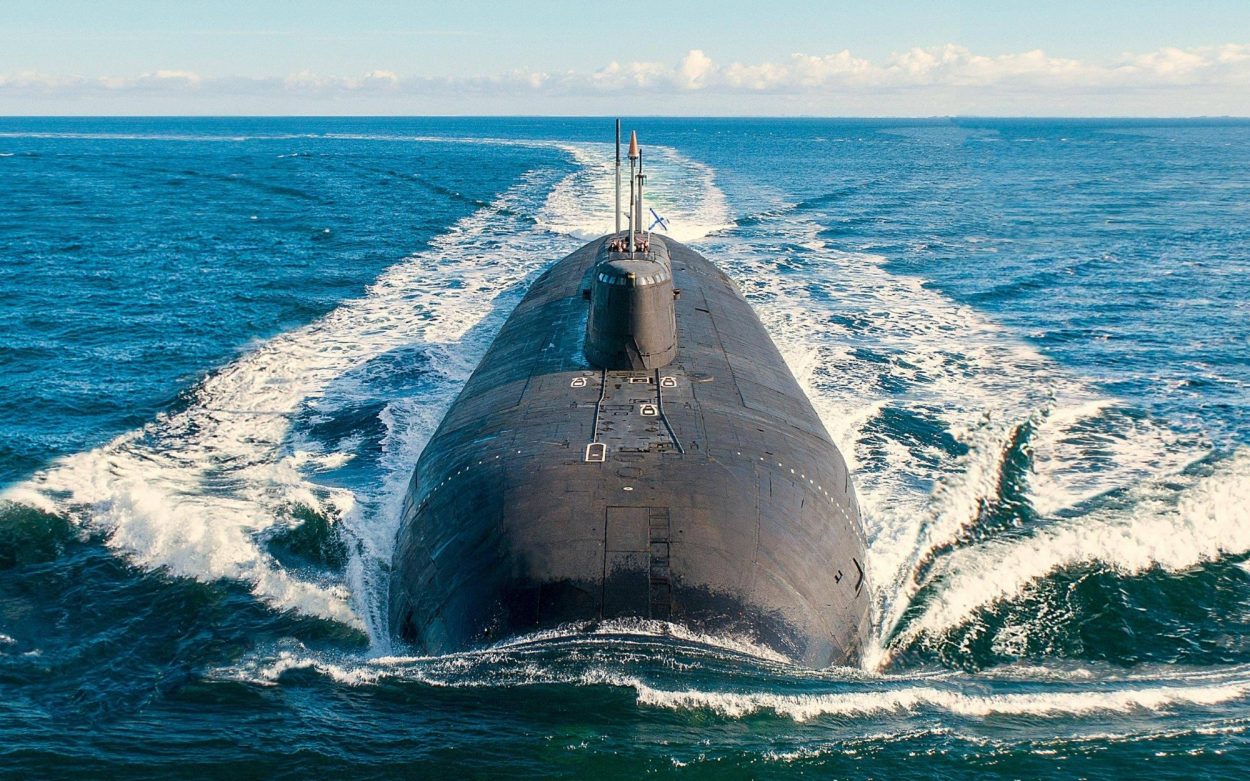Seventy years ago, the world’s first nuclear submarine, the USS Nautilus, embarked on its first patrol, kicking off a revolution in undersea warfare.
A ‘nuclear-powered submarine’ was the brainchild of late US Navy Admiral Hyman G. Rickover, who was frustrated with the submarines of the 1940s that had a limiting hybrid mix of diesel engines and battery/electrical propulsion.
Rickover wanted a submarine that could remain continuously powered for as long as it remained out in the sea, for which he sought to shrink a nuclear reactor down from the size of a city block to fit into a submarine.
Under Rickover’s leadership, a group of scientists and engineers at the Naval Reactors Branch of the Atomic Energy Commission successfully developed a nuclear propulsion plant the size of a walk-in closet.

The US Congress got involved in 1951 and gave the go-ahead for the first nuclear power submarine program. Construction began in 1952, and the vessel was launched in January 1954, after which it was finally delivered to the Navy in 1955.
On the morning of 17 January 1955, at 11 am EST, Nautilus’ first Commanding Officer, Commander Eugene P. Wilkinson, ordered all lines cast off and signaled the memorable and historic message, “Underway on Nuclear Power.”
After subsequent sea trials and preliminary acceptance by the Navy, Nautilus set sail on 10 May 1995, from New London, Connecticut, for a trip to San Juan, Puerto Rico, during which it remained submerged, traveling 1,381 miles in less than 90 hrs, the longest submerged cruise by a submarine until then and at the highest sustained submerged speed ever recorded for more than one hour’s duration.
Nautilus was powered by the Submarine Thermal Reactor (STR), which was later redesignated as the S2W reactor, a pressurized water atomic reactor capable of generating up to 13,400 horsepower giving the Nautilus a maximum speed of 23 knots. It was produced by Westinghouse Electric Corporation.
The submarine was 320 feet long, 82 feet longer than the conventionally powered Tang class, and displaced 4000 tons submerged, twice as much as the Tangs. It had a crew of 105.
While powered by an all-American nuclear power plant, Nautilus’ hull was of German origin, as the US had not developed the teardrop-shaped hull design, which is still in use today.
Nautilus resembled the German Type XXI U-boat, the most highly advanced design during World War 2 and the basis for many immediate postwar submarine designs such as the Soviet Whiskey class and UK Porpoise class.

The use of nuclear propulsion gave Nautilus a 5-knot advantage over the conventionally powered Tang class. However, the Type XXI–inspired hull was a compromise between surface and subsurface handling, which kept the Nautilus from reaching nuclear power’s promise of above 30 knot sustained speeds.
Nuclear propulsion put Nautilus way ahead of its time, rendering the anti-submarine warfare tactics developed during WW2 irrelevant.
During the war, Radars would detect submarines at shallow depth for dropping depth charges, or anti-submarine aircraft would wait for the subs to surface to attack them, but these tactics proved ineffective against a nuclear-powered vessel that could move quickly out of an area, change depth quickly and stay submerged for very long periods.
However, Nautilus was not without faults. When submerged or doing speeds above sixteen knots, the flow of water behind its sail produced vibration.
This made it necessary to shout to be heard in the torpedo room when the ship was in the fifteen-to-seventeen-knot range. The vibrations were so bad that the submarine’s sonar was considered unusable above eight knots.
Nautilus was originally meant to be a test-bed submarine to demonstrate the safety and viability of nuclear power and, as such, was planned to be unarmed. However, the decision was quickly reversed, and it was given a standard armament suite for its time which consisted of six 533 mm torpedo tubes in the bow, along with room to store up to twenty-six torpedoes.
From 1955 to 1957, Nautilus continued to serve as a platform for investigating the effects of increased submerged speeds and endurance, plus as “a floating operational laboratory for a wide variety of self-noise investigations.”
By 1957, Nautilus had been in action for 60,000 nautical miles (110,000 km; 69,000 mi), matching the endurance of her namesake, the fictional Nautilus from Jules Verne’s novel ‘Twenty Thousand Leagues Under The Sea.’

In 1958, the US government thought it was time to take the voyage to the North Pole, which no diesel submarine could manage. This was important to show the Soviet Union that an American Nuclear submarine could travel under the ice and threaten the Russian homeland by transiting through the Arctic.
The first attempt was made in June 1958, but it had to be aborted because of the heavy ice in the Chukchi Sea and a near-tragic collision with an ice keel. Nautilus went to Pearl Harbor to await approval to try later.
Two months later, Nautilus dived again under the ice near Point Barrow, Alaska, on 1 August 1958 and successfully passed beneath the geographic North Pole on 3 August. She surfaced in the Greenland Sea two days later after steaming 1830 miles under the ice in 96 hours.
Navigating the vessel in the Arctic and around the geographic North Pole presented unique problems because of proximity to the Magnetic North Pole, as the needles on magnetic compasses would start swinging erratically, and gyrocompasses, which find true north using the Earth’s rotation, could lose their lock and “tumble” because of the change in the rate of the Earth’s spin near the poles.
So, the Nautilus had a new device, an inertial navigation system that combined several inputs on ship speed, course changes, and outside conditions based on the ship’s steering instruments to plot its position.
This trans-polar voyage was completed on 12 August 1958, with the port call at Portland, Great Britain, where the crew of Nautilus received a heroes’ welcome. The crew was awarded a Presidential Unit Citation for that feat.
By 1961, the Navy had about a dozen nuclear-powered submarines in service. Nautilus continued to participate in various exercises with other nuclear submarines in the fleet and various NATO exercises in the Atlantic. It even participated in the quarantine of Soviet shipping during the Cuban Missile Crisis.
Nautilus was a truly exceptional achievement in an era where technological progress was rapid due to Cold War. Its last mission was through the Panama Canal and onto the west coast of the US, after which it was decommissioned in 1980.
During its career, the sub had made 2,507 dives and traveled 513,550 miles without an incident.
- Contact the author at etdesk@eurasiantimes.com
- Follow EurAsian Times on Google News




